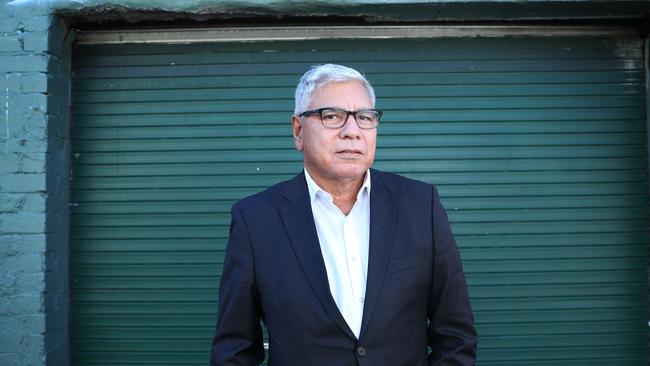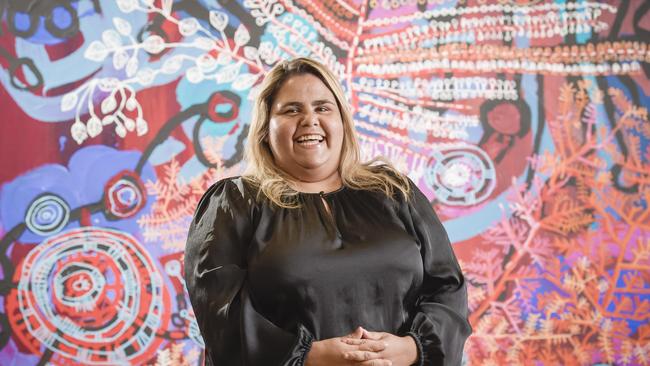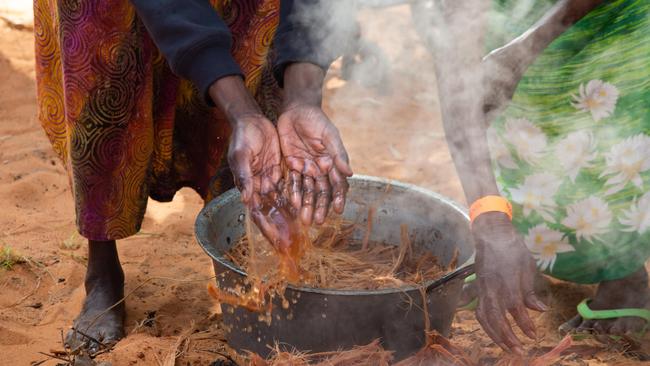Leaders have called for compassion and context as Australia prepares to vote
Leaders have expressed concerns over a lack of details in the Prime Minister’s plan to implement Uluru Statement from the Heart. Read more here:
Indigenous Affairs
Don't miss out on the headlines from Indigenous Affairs. Followed categories will be added to My News.
MIDDAY SUNDAY 31 AUG: ABORIGINAL leaders have called for a considerate, informed and compassionate debate as the nation prepares to vote on an the Uluru Statement from the Heart.
Aboriginal advocates at the Garma Festival have voiced concerns about the potential ‘Americanisation’ of political debate blocking a considerate referendum on the Voice to parliament.
Uluru Statement from the Heart leader and Wiradjuri man Geoff Scott said the regional dialogues - a series of 12 meetings with more than 1200 First Nations people - revealed a unanimous call to restore the Voice of Indigenous people.
“What we heard unanimously was the fact that we had lost our voice. We wanted the power back,” Mr Scott said.
Mr Scott said after “ten years of failure” to Close the Gap, spending $20-30m on Aboriginal affairs annually, Australia needed to stop repeating mistakes and allow Indigenous people to speak up and be heard on issues that impact them.
Nyunggai Warren Mundine AO said he was among many Aboriginal and Torres Strait Islander people who were not fully on board with the proposed constitutional changes.
“I’ve heard the best, most beautiful words said yesterday (from Prime Minister Anthony Albanese) … but I’ve got to be convinced about this,” Mr Mundine said.
“I’m a very strong believer in Country … for too long people have been ignoring people on Country.

“I read the details (of the Voice to Parliament) … and I didn’t agree with it. To me it was too large, too bureaucratic.
“I want something where Countrymen have their voice.”
Mr Mundine said he disagreed with Mr Albanese’s argument that the structure of the Voice could be established after the referendum.
“Unlike the Prime Minister who said yesterday ‘we’ll discuss that after we put it in the constitution’. I want to discuss it before.”
Mr Mundine pushed for legislative, rather than constitutional change, so the workings of the Voice could be established.
“Why do we need it to happen in the constitution? Because when you have things in the constitution and it doesn’t work, how are you going to get it out?”
He said there needed to be a test and trail phase before legislation.
“You can’t ignore the things that need to be done to move forward. And I would like to know how they are going to do that before I’m ever going to sign up to this.”
Mr Mundane said he had seen things fail too many times.
Rather than constitutional reform, Mr Mundine advocated for successful and proven paths to amplify Indigenous voices in parliament, including growing First Nations representation in parliaments to more than 20 per cent in 10 years.
“You’re getting people who are connected back to their Country, who are talking to their people and they’re very educated.”
Uphold and Recognise chair Sean Gordon said his organisation worked with conservatives to bring them on the journey of Indigenous constitutional recognition.
“Aboriginal people make up 3 per cent of the population. That means we’re depending on 97 per cent to support our cause in regards to our recognition in the founding document,” Mr Gordon said.
Mr Gordon said many Indigenous communities had a very different relationship to bureaucrats than most Australians, and it was time they were given their voice back.
“Government agencies an bureaucrats don’t live in your life, and don’t operate in your life,” Mr Gordon said.
“But I can tell you in Indigenous communities they are well and truly embedded in Indigenous people’s lives.
“They need to step back and allow Indigenous people to step up and take responsibility for the things that belong to us.”
Standing on Miwatj land after hearing of the economic success of the Gumatj people, Mr Gordon said it could not be assumed all communities were starting from the same starting block.
“They’ve had different challenges, different interactions from first contact, all the way up to now,” Mr Gordon said.

Pitjantjatjara woman and APY Artist Sally Scales similarly warned against a “one-size fits all” approach and said a Voice could allow policy to address the “richness and devastation of all different degrees in our communities”.
“I’m sorry but I don’t want to see Truth from a Western lens anymore,” Ms Scales said.
“It has to come from our communities.”
Turning to the napaki (non-Indigenous) attendees at Garma, Ms Scales asked them “how are you going to use your privilege, the voice that you have to give us a voice?”
She called on everyone to read the “gift to all Australians” that was the Uluru Statement in preparation for the referendum debate.
“If you support the Uluru Statement say it widely and proudly... and if you meet someone you disagree with have an actual conversation.”
“I think we’ve forgotten that we can have an actual conversation and a debate without attacking each other.
“Let’s not turn into America please.”
An official referendum date has not yet been set, with Aboriginal leaders calling for enough time to inform the public without leaving them “waiting forever”, as Mr Mundine said.
Mr Scott said more details of the final referendum question were expected around December, with the debate to continue from there.
Ms Scales said as a woman from the desert Country near Uluru, she would like to see a symbolic date such as the 26 May, 2024, the seven year anniversary of its presentation.
EARLIER: Illuminated in smoke, Gumatj Elder Dela Mununggurr waved her hands through the burning stringybark as djamarrkuli (children) gathered by the flames.
The ceremonial smoke of Ryapirri marked the official opening of Garma’s youth forum 2022 on Saturday by inviting young people into a traditional form of healing.
Ms Munungurr said she has been holding Raypirri for the youth forum for 22 years.
“It’s a very special ceremony for Yolngu people,” she said.
“It teaches right from wrong.
“For those who experience it at the youth forum, they come and they keep it in their hearts and in their minds.
“This is a very special thing for Yolngu people to share.”
In preparation for the event the women collected the bark and crushed its fibrous strips before soaking them in water.

As the bark burns on the fire, young people breathe in the rising smoke and are bathed in its healing.
The ceremony began with Yolngu women serenading the men with songs about gadayka, the stringybark bush medicine.
The rhythmical breath of the yidaki (didgeridoo) and the tap of the bilma (clapping sticks) set the beat as the Raypirri began.
More than 3700km from her home in Coonamble, NSW, 14-year-old Temia Robinson said the ceremony made her feel welcome on Miwatj, sunrise country.
“It was a beautiful experience,” Temia said.
“The Elders held it to welcome us into their land and to make us feel safe.
“When I first arrived here, I did feel a bit nervous, and after that I didn’t anymore. I just felt welcome.”
The young Gamilaraay woman said it was incredible to witness the culture passed down for thousands of years.
“It’s been great to experience culture that the Elders would have learnt from their parents and passes on, and now they are passing onto the next generation,” Temia said.
“That’s how our mob learn, our Elders pass information to us and we pass it to the next generation.”

She said the Raypirri was different to the smoking ceremonies of her own community.
“I’ve learnt how different First Nations culture is at different mobs,” Temia said.
Fellow 14-year-old Gamilaraay woman, Mikiala Thurston said she was captured by the language and dancing at Garma.
“I was a dancer in an Indigenous group and I love watching other peoples’ dancing. I’m also really enjoying listening to all the languages,” Mikiala said.
“It’s really great to experience different mob’s culture.”
National Aboriginal Sporting Chance Academy program director Skye Parsons said it was critical for young people to learn and experience traditions, stories, culture and see how they were passed down from each generation
“These young people will go home and now share what they have seen and experienced,” the Yuin woman from NSW said.
“For many of these young people, it’s their first time on a plane, it’s a big journey, and a really unique experience for them.”





